Thor: Love and Thunder review – superhero sequel is a wild ride with a killer cameo
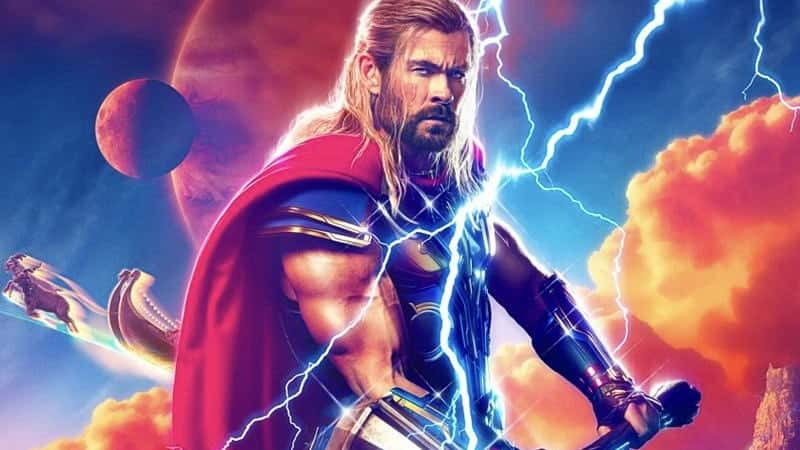 Marvel/Disney
Marvel/DisneyThor is back and facing his deadliest foe yet, assembling a rag-tag team to do battle with a butcher who plans to kill all gods. But while Thor: Love and Thunder is an improvement on the character’s first two celluloid outings, it’s no Thor: Ragnarok.
The God of Thunder’s film journey began in a forgettable fashion with Thor back in 2011. It then got worse with the legitimately bad Dark World in 2013.
Mercifully, writer-director Taika Waititi took the reins in 2017 and reinvented the character, and in the process reinvigorated the entire franchise. Waititi recognized Thor’s inherent silliness, embraced the trait, then stuck him on a trash planet where it could be celebrated. The result was the marvel-ous threequel Ragnarok.
Following that joyous burst of absurdist fun would be no easy task, and Thor: Love and Thunder doesn’t quite live up to its predecessor, thanks to a forgettable villain, an uneven tone, and a few narrative missteps, including a criminal post-credit scene.
The fun remains however, thanks to some spectacular action, and a wicked cameo that lights up the screen mid-way through proceedings and pretty much steals the show.
BEWARE OF MILD SPOILERS AHEAD…
Introducing Gorr the God Butcher
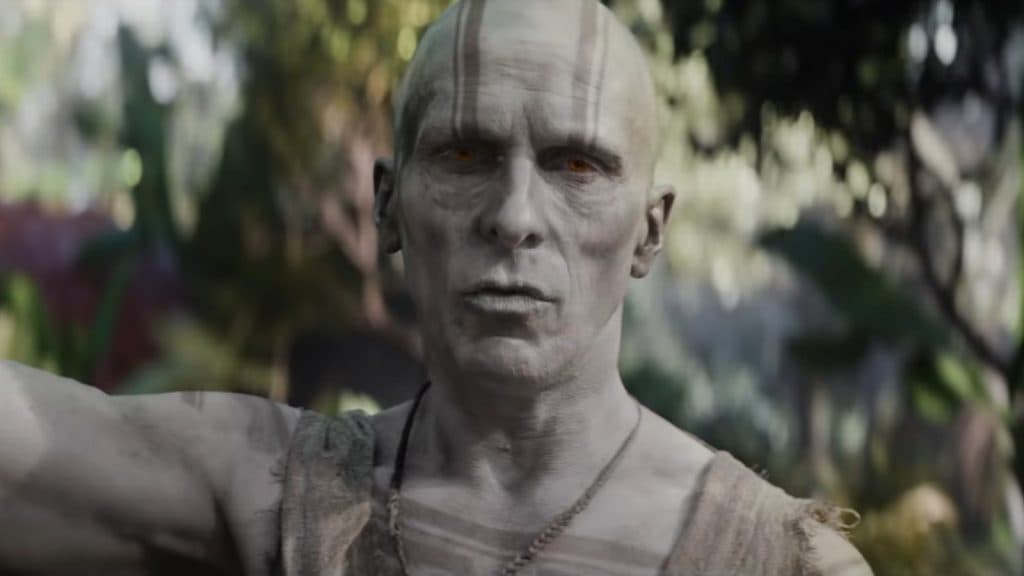 Marvel
MarvelThere’s no sign of Chris Hemsworth’s Thor early in proceedings. Instead the film kicks off on Christian Bale’s Gorr, desperately trying to save his child’s life by carrying her across a desert.
Tragically, Gorr fails. When he then locates the Gods, explains that his daughter died in their name, and begs for his “eternal reward,” they laugh in his face.
- Read More: Thor 4 needs to restore my faith in the MCU
BIG mistake, as Gorr grabs a ruddy great sword, renounces them, and makes it is mission to rid the universe of their kind. As Gorr succinctly puts it, “All Gods must die.”
So five minutes in we’ve met our villain, witnessed the origin of his “God Butcher” persona, and understood his motivation. This mercifully makes Love and Thunder one of the shortest Marvel movies in recent memory. But where is our hero?
Guardians of the Galaxy engage
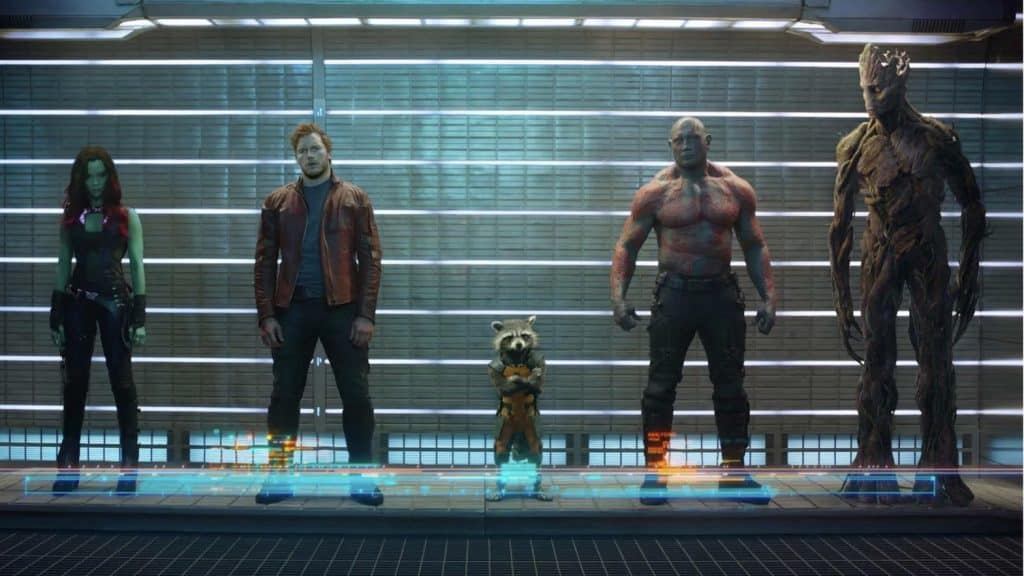 Marvel Studios
Marvel StudiosSeems Thor is now working with the Guardians of the Galaxy, travelling from planet to planet to aid those in need. Meaning we get more of the hilarious rivalry between God and (Star-)Lord.
Thanks to crossover events and multiverse business, it now feels like there’s an expectation that external characters will pop in and out of all the Marvel movies.
But while the Guardians provide some of the film’s biggest laughs – with Sean Gunn’s Kraglin an unexpected stand-out – including them is to the detriment of Love and Thunder.
That’s because the GOTG are more engaging than Thor’s cast of characters. Dropping them in for a few minutes feels like fan service rather than anything that actually serves the overarching story. And when they disappear, the film suffers for their absence.
Team Thor assembles
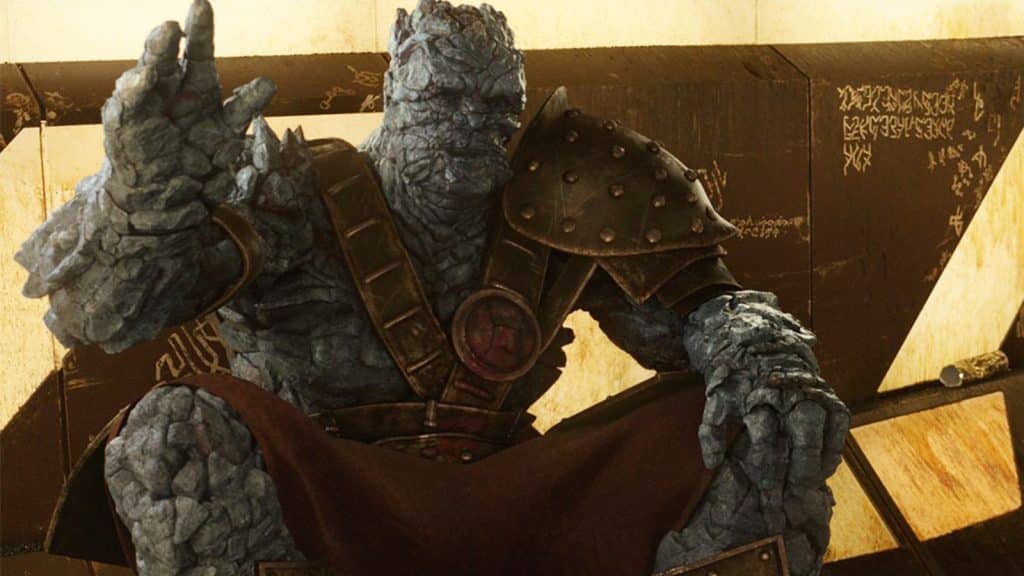 Disney
DisneyThor now needs a gang of his own to go up against Gorr, and it’s pretty similar to the the team he assembled to give Hella hell in Ragnarok.
So Korg returns, and he’s again played by the film’s director. But while the Kronan delivers some useful back-story via narration – reminding us that Thor keeps people at arm’s length because of all the pain and loss he’s suffered – Korg just isn’t as funny in this instalment. Suggesting that maybe he was a one-joke character that should have been limited to one movie.
Valkyrie is also back, and ruling over New Asgard as King. But while the character’s bisexuality is confirmed – refreshing in a franchise that has often feared embracing diversity – Tessa Thompson is still affecting that terrible English accent. So while Valkyrie kicks all kinds of ass throughout proceedings, she sounds quite ridiculous while doing it.
But the most important addition to Thor’s crew is also one of the film’s biggest surprises, and major positives – namely Jane Foster.
Meet the Mighty Jane
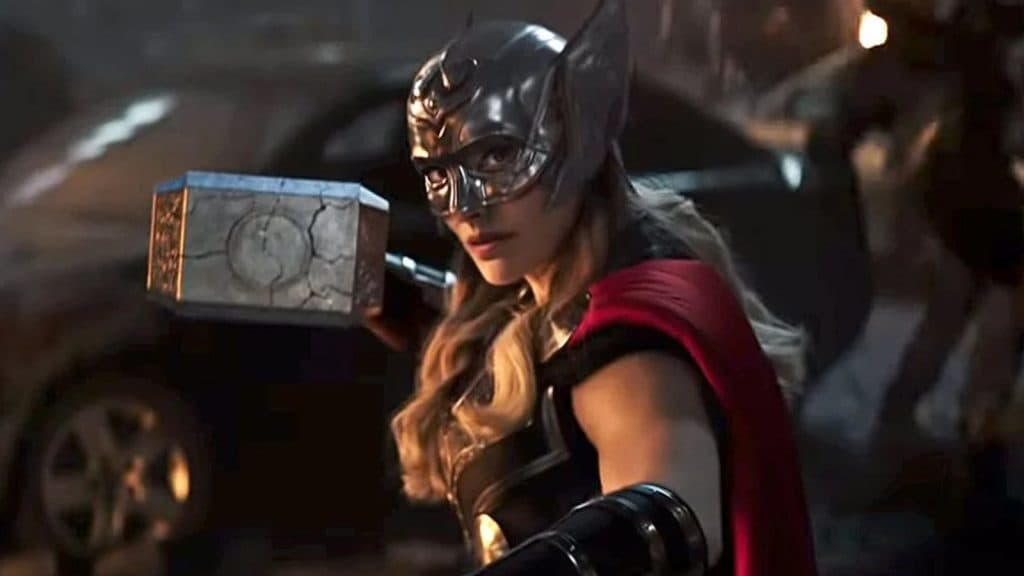 Marvel Studios
Marvel StudiosAs played by Natalie Portman, Jane Foster was Thor’s damsel in distress for films one and two, before being dropped almost entirely for film three. But Jane is back, big time, bringing both the Love and the Thunder for film four.
She’s also undergone something of a transformation since Thor last saw her. For reasons we won’t spoil here, Jane has travelled to New Asgard, bonded with a reforged Mjolnir, and become the Mighty Thor, with Foster now tall and muscle-bound.
This seriously shifts the power dynamic between the pair, while at the same time giving Portman something substantial to sink her teeth into, and the Oscar-winning actress delivers during Jane’s more serious scenes.
It’s also fun watching her war and flirt with Hemsworth, with a stand-out scene charting their rocky romance via flashback. That said, just as much fun is had watching their weapons interact. Thor is pining for another lost love – Mjolnir – which in turn makes his axe Stormbreaker jealous, their riotous rivalry proving that Waititi can find comedy in pretty much anything.
Zeus steals the show
Russell Crowe as Zeus in #ThorLoveAndThunder: https://t.co/qDaC7tqSEB pic.twitter.com/17ilwEE1uK
— MCU – The Direct (@MCU_Direct) May 24, 2022
With our villain killing Gods, kidnapping kids, and butchering those who stand in his way, Thor springs into action. Though realizing he and his team can’t take Gorr down alone, they go to Zeus for help. Which is where the film kicks into high gear.
As played by Russell Crowe, Zeus is the film’s MVP. Surrounded by his subjects in Omnipotent City – beautifully realized by the film’s artists and technicians – Zeus is arrogance personified. And the god on whom Thor based his own personality.
Affecting an hilariously bad Greek accent – which unlike Valkyrie, is played for intentional laughs – his priorities are all out of whack, with Zeus less interested in stopping the God Butcher, and more concerned with where his next orgy will take place. Making Zeus the last person Thor should be trying to enlist.
The scene is very nearly pointless (the stealing of his lightning notwithstanding). But Crowe is clearly having a blast, and the laughs come thick and fast, so this final, dazzling detour can be forgiven before the film heads into the more serious home stretch.
Love ‘n’ Thunder ‘n’ Guns ‘n’ Roses
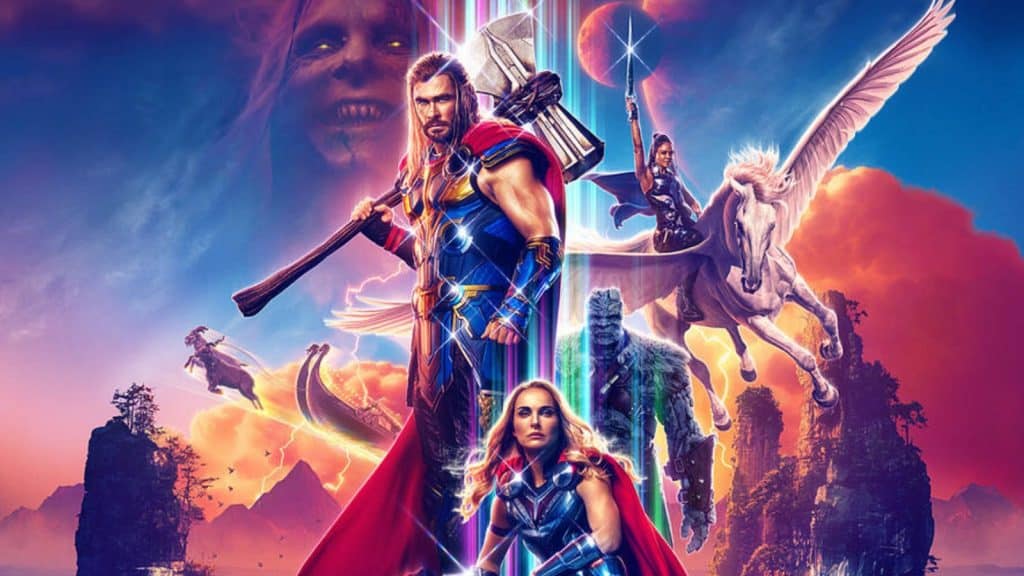 Marvel Studios
Marvel StudiosThis being a Marvel movie, Love and Thunder has to end in a big battle. Trouble is, it’s over some kids we don’t really know, and therefore don’t care really about. Against a villain who is so-one note he fails to light up the screen at any point after that affecting introduction. Mercifully, Waititi knows how to stage action that doesn’t look like a re-tread of what’s come before.
So the rock ‘n’ roll approach remains, with Guns ‘n’ Roses sound tracking much of the climax. And the palette is frequently as bright as the one that lit up Ragnarok. But the director has added some stunning black and white sequences into the mix. Frames are therefore drained of color when we reach the Shadow Realm – which is a shock to the system – then brought back to life with stunning bursts of yellow and flashes of red.
So if by this point you’ve lost interest in Gorr’s endeavours to open a portal to Eternity – or Thor’s efforts to rescue the children of New Asgard – you can simply sit back and appreciate the immense beauty of what’s playing out onscreen.
The Verdict – Is Thor: Love and Thunder good?
For such a joyful comedy, there’s lots of misery and death in Love and Thunder. Waititi and co-writer Jennifer Kaytin Robinson craft scenes of high emotion, then sandwich them between the stupid and absurd. So while their efforts to tell several more serious stories within a Marvel movie are to be admired, they don’t always work, and frequently make for quite a strange viewing experience.
The film also feels overstuffed with characters, meaning Thor’s new team jostle for attention with his old cohorts, as well as several Gods and Guardians. That’s a lot to pack into two hours, and it means that the film’s villain gets the short end of the stick, with Gorr lacking dimension, and Bale simply moaning or gurning for most of his time onscreen.
Love and Thunder also ends on a genuinely touching note, but then commits the crime of including a post-credit scene that totally undermines what’s come comes before. If Marvel want audiences to truly invest in these characters, they’ve got to have the courage of their convictions, and stay true to the decisions they make, no matter what the cost.
But the film strikes gold with Russell Crowe’s memorably deranged Zeus; gold that the MCU will doubtlessly mine in future films. So while it never quite reaches the dizzying heights of Ragnarok, Thor 4 is still a wild ride, and if you like your action bright, bold, and scored by a seriously rocking soundtrack, Love and Thunder is a feast for both the ears and eyes.